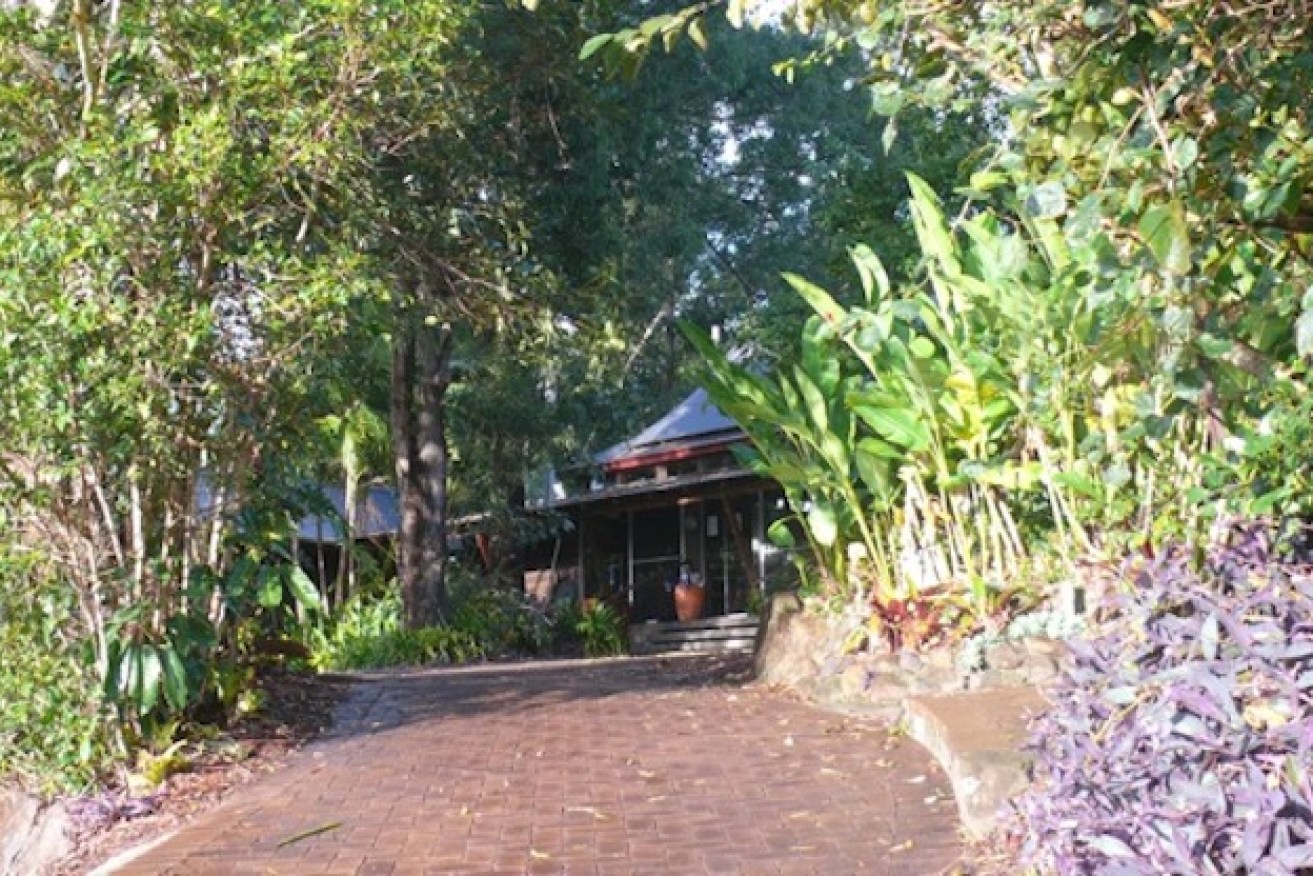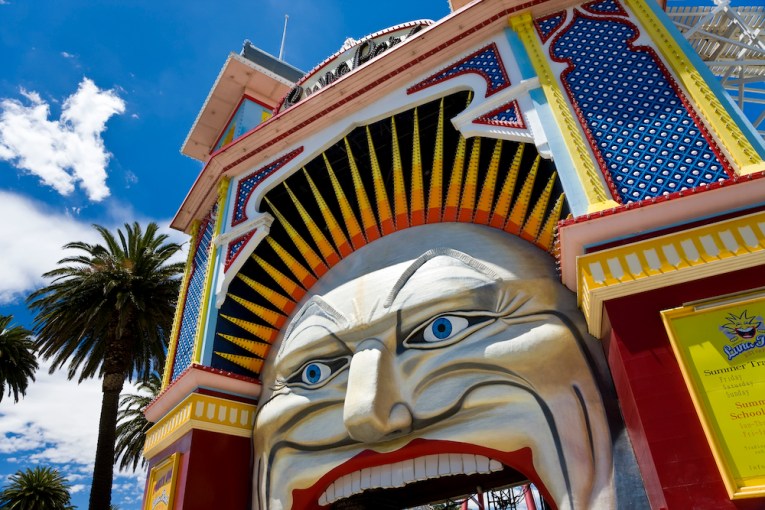Sound of silence: a week unplugged

Carol Perry sits cross-legged on the small dais in the hall at Sangsurya – a village retreat of cabins and buildings dotted about vivid gardens in the Byron Bay hinterland.
Dressed in black, this big-hearted, strikingly diminutive psychotherapist and Vipassana insight meditation teacher is bobbing animatedly from side to side as she speaks to the 35 silent men and women sitting on the floor before her about how moved she’d been when she worked to fight fracking in the Northern Rivers area of New South Wales.
• This is the walk every Aussie should do
• Confessions of a first-time cruiser
• Australia from above: view the stunning pictures
Suddenly she looks about the room and says with wistful irritation: “But the media won’t be interested in 35 people sitting around here in silence for a week. There’s no story in that for them.”
I wonder, Carol.
In this world of compulsive connectivity, information overload and butchered time, to give up so many daily fixes for a week of mindful reflection may seem masochistically monkish.
But if news is a mix of the ordinary and extraordinary told in different ways to different audiences, then a retreat like this is news of a very human kind.
So, what exactly is it?
When you arrive at Sangsurya, speaking is permitted until you have signed in and volunteered for a job (clearing up after meals, cleaning bathrooms, mindfulness work in the garden and so on).
From then, you are silent unless you volunteer to step up for an “open inquiry” session, or you are in a group meeting with a teacher.
Each day begins at 5.45am in darkness, when a bell ringer walks slowly along the pre-dawn pathways rousing the “yogis” for a 45-minute yoga class, before a 45-minute sitting meditation in the main hall. Some sit on cushions, some on purpose-built meditation chairs, but all return to the same spot for three sitting sessions a day.
Vipassana means “to see things as they really are”, and the process begins by meditating on something we all take for granted: breath. You’d think it would be easy. It’s not. At least not for a beginner (which I still consider myself to be after four years of practice).
You close your eyes and concentrate on the sensations of inhaling and exhaling, but thoughts come like gatecrashers at a private party. The trick is to notice them – how can you not? – and let them pass.
You close your eyes and concentrate on the sensations of inhaling and exhaling, but thoughts come like gatecrashers at a private party.
If your normal start to the day is a speed shower, a coffee and a commute through the life-stealing drag of morning peak hour, welcome to the other end of the spectrum.
On retreat, you start the day by gently waking up your body, then your mind. Then an hour and a half later your taste buds join the process with the ultimate healthy breakfast of exotic porridges, fruit compotes, organic yoghurts, eggs, nuts, fruits, breads, teas and, mercifully, coffee.
The dining area, with its large deck at tree-top level looking out across the rainforest to the ocean, is where we all sit silently eating. Being one of a couple of dozen people eating communally but not speaking is weird at first. But you quickly feel released by not having to make small talk.
After breakfast, there’s an hour or so of “mindful work” in the gardens. The more experienced gardeners get to prune and prepare flower beds. Gardening novices, like me, get to weed … and I know I’m not the only one who finds it odd to be paying someone to weed their property.
Yet, as the days wear on it becomes more and more pleasurable to get down on hands and knees, smell the air, the rich earth and the flowers and silently do that simple task.
After this you assemble for “instructions” from Carol or Subhana, the first of three hours of daily dharma teachings about how to live life mindfully and wisely to give yourself the best chance of happiness and fulfilment. There’s also a dharma talk in the evening.
But the most intriguing session is the dharma inquiry every afternoon. Here one of the teachers, sitting cross-legged on the dais next to an empty cushion, gestures to it and says to the assembled yogis: “Anyone is welcome.”
The invitation to sit on that empty cushion and speak of a personal issue or ask a question of the teacher in front of 34 strangers is not one that, initially, anyone is eager to take up.
But after a period of silence punctuated by coughs and shuffles someone steps up and sits next to the teacher to nervously speak about being hijacked by grief seven years after the death of a sibling. It is the first of many very personal stories that are shared during the week.
All listen but only the teacher asks questions or responds to those stories to help everyone see how things really are. It is very moving to witness, not least because each individual who shares their story is trusting complete strangers by exposing an intense vulnerability.
It is noticeable how each day you feel more aware of the air, the light, the birds and plants. You are more mindful of the sensations in your body and how things smell and taste and what they feel like to the touch. It is a powerfully refreshing process.
By the end of the week, despite the absence of shared conversations, there are no strangers here. There’s a feeling of oneness, of tolerance, of gratitude. Why it is called a retreat is a mystery. To me is seemed like a priceless personal advance in a hectic world – all for $100 a day.
Your turn…
If you’re interested in undertaking a silent retreat, you can apply for a Vipassana meditation course in your state by clicking here.












